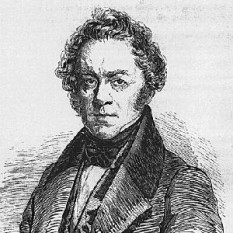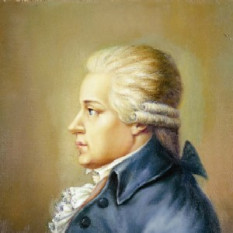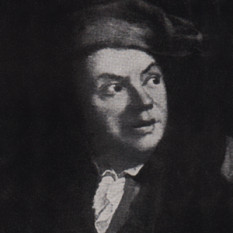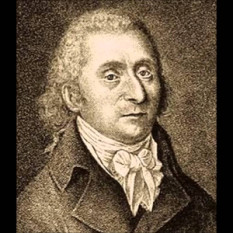Johann Georg Albrechtsberger (1736-1809) was an Austrian music theorist, organist, and composer.
Born in Klosterneuburg on the 3rd February 1736, he originally studied music at Melk Abbey and philosophy at a Benedictine seminary in Vienna, and became one of the most learned and skillful contrapuntists of his age. Albrechtsberger's earliest classmates included Michael Haydn and Franz Joseph Aumann. After being employed as organist at Raab in 1755 and Maria Taferl in 1757, he was appointed Thurnermeister back at Melk Abbey. In 1772 he was appointed organist to the court of Vienna, and in 1792 Kapellmeister of St Stephen's Cathedral.
His fame as a theorist attracted to him in the Austrian capital a large number of pupils, some of whom afterwards became eminent musicians. Among these were Johann Nepomuk Hummel, Ignaz Moscheles, Josef Weigl, Ludwig-Wilhelm Tepper de Ferguson, Antonio Casimir Cartellieri, Ludwig van Beethoven, and Franz Xaver Wolfgang Mozart. Beethoven had arrived in Vienna in 1792 to study with Joseph Haydn but quickly became infuriated when his work was not being given attention or corrected. Haydn recommended his friend Albrechtsberger, with whom Beethoven then studied harmony and counterpoint.
His published compositions consist of preludes, fugues, and sonatas for the piano and organ, string quartets, etc., but the greater proportion of his works, vocal and instrumental, exist only in manuscript, held in the library of the Vienna Gesellschaft der Musikfreunde. Around 1765, he wrote at least seven concerti for jew's harp and strings (three survive in the Hungarian National Library in Budapest). They are pleasant, well written works in the galant style.
Probably the most valuable service he rendered to music was in his theoretical works. In 1790 he published at Leipzig a treatise on composition, of which a third edition appeared in 1821. A collection of his writings on harmony, in three volumes, was published under the care of his pupil Ignaz von Seyfried (1776–1841) in 1826. An English version of this was published by Novello in 1855. His compositional style derives from Johann Joseph Fux's counterpoint, who was Kapellmeister at St Stephen's Cathedral 1713-1741, a position that Albrechtsberger would hold fifty-two years later.
One of his most notable works is his concerto for alto trombone and orchestra in B flat major. As the trombone has few works dating back to the classical period, his concerto is often highlighted by the trombone community.
Albrechtsberger died in Vienna, on the 7th March 1809. .
Puoi trovare informazioni attraverso il miglior motore di ricerca musicale - Muzlan.top 😊Tutti i materiali su richiesta "Johann Georg Albrechtsberger" sono disponibili a pagina Johann Georg Albrechtsberger
Sì, naturalmente. Puoi ascoltare le tracce sulla pagina Johann Georg Albrechtsberger
Sì, naturalmente. Puoi scaricare le tracce dalla pagina Johann Georg Albrechtsberger
Questa pagina viene trovata dalle query: Johann Georg Albrechtsberger remix, Johann Georg Albrechtsberger mp3 download, Johann Georg Albrechtsberger all mp3, Johann Georg Albrechtsberger flac, Johann Georg Albrechtsberger track minus




